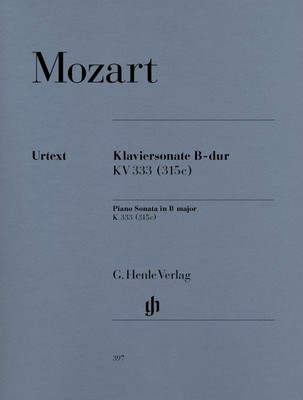Piano Sonata in B flat major K 333
An authoritative Urtext edition of the Piano Sonata in B flat major K.333 by Wolfgang Amadeus Mozart. Edited by Ernst Herttrich with fingering by Hans-Martin Theopold. FIRST MOVEMENT This Sonata takes us into new realms of lyricism Œ_ we suppose that this is inherent in MozartŒÍs choice ofkey. The first movement opens with a cantabile theme which no one else could have written. It should be noted that measures 3 4 (with upbeat) are a variation of the initial phrase. A minor Italian composer might have repeated the opening statement one step lower; it still would sound well, but it would not be comparable in any way to the beauty of MozartŒÍs theme. The wealth of melodic and thematic inventions here and in the rest of the Sonata is simply staggering. How simple, in comparison, is BeethovenŒÍs structure in his Sonata in the same key of B-flat, op. 22! In this Sonata Mozart anticipates in more than one way the Œñheavenly lengthŒî of some of SchubertŒÍs Sonatas. SECOND MOVEMENT According to Daniel SchubartŒÍs aesthetic theory, E flat, the key of the middle movement, was the key Œñof love, prayer, intimate converse with the Almighty, signifying the Trinity with its three flatsŒî- a characterization which does seem to apply, for once, to this rather solemn and profound Andante cantabile movement. It is in sonata form, and sometimes gives the impression of having been conceived as a string trio. One of the boldest moments is the beginning of the development with its biting dissonances, all the more telling after the preceding euphony.THIRD MOVEMENT The somber ethos of E flat is dispelled by a concertante Rondo finale in B flat, although this good-humoured movement does retain a touch of seriousness Œ_ a sufficientlyweighty conclusion to this fine Sonata. Several features Œ_ not least th e tutti entry preceding the cadenza (m. 168) Œ_ suggest that this is a concerto movement in disguise. The insertion of a full-scale cadenza (m. 171) into a piano sonata movement is most striking, and this powerful oneis only rivaled in MozartŒÍs Concertos. It far surpasses those in HaydnŒÍ s and C.P.E. BachŒÍs Sonatas.
Product Details
Specifications
Specifications
-
Composer
-
Arranger

